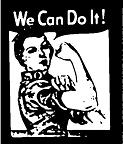Playing With Math:
Forty Four Ideas for Mixing Food and Math (and Science)

"A good education for every child
does not mean the same education for every child. "
Please use what works for you and your
child and ignore the rest. Every
child is different. If this
information does not seem to be a good fit for your particular child, then
keep looking and experimenting until you find what works.
This Web Page by Pauline
Harding for Art Nurk.
Contents may be copied for personal use if credit is given. Please ask for permission before any
other use. Do not copy this
information onto your own web site without permission.
- Geometry – shapes – spherical oranges, circles of salami, squares of cheese, cubes of cheese
- Arranging patterns on the plate- alternating tomatoes and onions on a platter for a party
- Using cookie cutters to make shapes – which shapes tessellate?
- Counting everything –jellybeans, carrots, forks, peas
- Sorting and counting a bag of M&M’s – how many browns? How many oranges? Make a graph. Now subtract!
- Grouping by twos or five or tens – each person gets two cookies – how many do we have? Do we have enough?
- Putting out a fork for each person, a spoon for each plate.
- Buying snacks at the pool. How much money do we have? How much do things cost? How can we get something for each person? What about the change?
- How long until dinner? How will we know? What does the clock say?
- Measuring cups and spoons. How many half cups in a cup? How many quarter cups?
- Weight. A pound of pasta, a pound of butter, five pounds of flour, an ounce of cheese.
- Adding an extra person for dinner. How many plates? How many kids? How many adults? How many in all?
- Subtraction of cookies.
- Making patterns on Christmas cookies.
- Making a food pyramid chart, a chore chart, a what’s for dinner chart.
- Surveying the family – rice or potatoes? Tallying the vote.
- What does a hundred look like? A hundred cheerios, jellybeans, chocolate chips. How many more make a thousand?
- How many chocolate chips in each cookie? How many in the whole batch?
- Measuring the temperature of the candy or fudge.
- Estimating which container has the capacity for the leftovers.
- Dropping food coloring into glasses of water. Ratio of red to yellow when making orange.
- Does this cup hold more or less water? What if we use a shorter, fatter cup?
- If four people eat one slice of a pizza cut into eighths, how much pizza is left?
- How can we make twice as many cookies in one batch?
- Who gets the first pancake? Who gets the second? Third?
- Estimating how many beans in the jar. Were you right? Count and see!
- Reading stories about food. Reading recipes. Following the directions on the cake mix box.
- How many pieces do we need from this rectangular cake? What are the different ways we can cut it?
- If the muffin pan has four cups in one direction and three in the other, how many muffins can we make?
- How many pieces of pizza do you think the people at our party will eat?
- Decorating round cakes using radial symmetry.
- Using toothpicks in marshmallows to make geometric models.
- Sculpting bread dough.
- Dividing the cookies among the number of kids present. Deciding what to do with the remainder.
- Half of the jellybeans is how many? How many is one third?
- Cooking with metric units.
- Throwing eggs out the window wrapped in straws and Popsicle sticks and tape. Do they break?
- Saving seeds from apples and melons and tomatoes. Sorting them. Planting them – how high do they grow? Make a chart.
- Cut a stalk of celery in half at the bottom. Put each end in water with food coloring. What happens to the leaves?
- Shake the can of mixed nuts. Now open it. Where are the big nuts? Where are the small ones? Why?
- How much sugar is in this cereal? How much fiber? What about that one? Which costs more? Why?
- Sorting cans and boxes in the cabinets. How do they fit together? Which one is taller? Cylinders and rectangular solids.
- Properties of matter: solids, liquids, gasses. Ice, water, steam.
- How hot is the oven? How cold is the freezer? How do we know? How does it work?